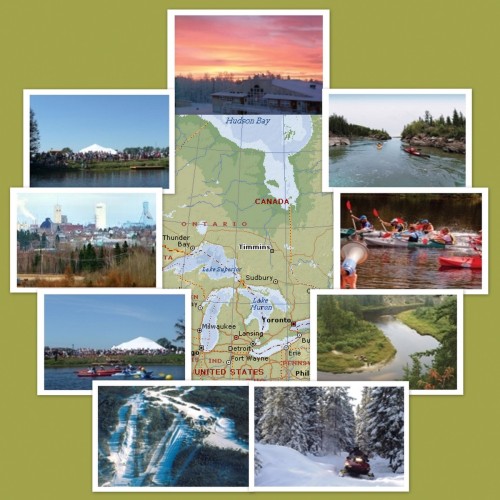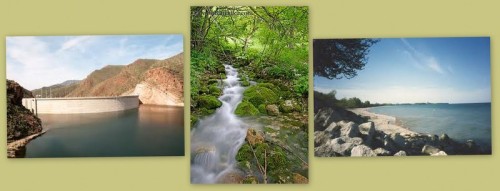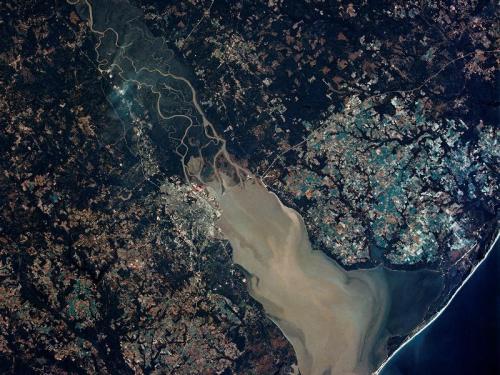BRRR!!! ~ IN THE DEEP FREEZE NOW!!!
Right now, like many other Canadians, we are in a deep freeze and should be aware of the following causes and prevention steps we can take to avoid costly and heart-breaking damage to our homes from burst water pipes – here or away on holiday. I’ve added ‘Prevention of Burst Pipes’ and ‘Tips on preventing your pipes from freezing while on vacation’ Why Do Pipes Burst the Way They Do? at the end of this blog.
The following are excerpts from Why Cold Weather Makes Your Water Pipes Burst written by Nick Berry – DataGenetics – 12/11/13
We’re currently experiencing colder-than-seasonal weather here in Seattle. This is causing a lot of problems with burst water pipes. Here is a picture of a couple of issues suffered by a friend of mine Ian.
Why do water pipes burst, and why do they always fail the same way? These are two interesting questions.
Water pipes burst because the water inside them expands is it gets close to freezing, and this causes an increase in pressure inside the pipe. When the pressure gets too high for the pipe to contain, it ruptures.
We grew up with water all around us and so this expansion phenomenon seems natural, but interestingly, it is a chemical anomaly. Most liquids do not expand just before transition to solid. You should be thankful for this; it is one of the reasons that life exists.
When a liquid cools the molecules slow down (temperature really is just a measure of the average kinetic energy of the molecules). This slowing down allows the molecules to get closer together and increases the density of the liquid. This happens with water too, and when water is cooled down, it gets denser and denser, down to 3.98°C then, something interesting occurs; it starts to expand again.
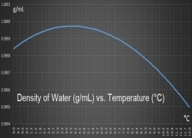 You can see this effect on the graph …which shows how the density of pure water changes with temperature (at one atmosphere). You can see how density reaches a maximum at 3.98°C.
You can see this effect on the graph …which shows how the density of pure water changes with temperature (at one atmosphere). You can see how density reaches a maximum at 3.98°C.
Because of the shape of a water molecule, it is slightly polarized. The electrons buzzing around it are more likely to be on one side of the molecule than the other (called a dipole), and this asymmetry creates a slight potential. Water molecules are attracted to each others’ opposite sides. These potentials create weak bonds that are called Hydrogen Bonds. Hydrogen bonds, whilst not as strong as covalent bonds or ionic bonds, are stronger that van der Vaals forces.
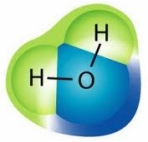 This extra hydrogen-bond ‘glue’ holding water molecules together is the reason why water is a liquid at everyday temperatures and pressures (another one of the reasons life exists). Other chemical compounds similar to H2O, but without the benefit of Hydrogen bonds, are all gases in typical Earth temperature ranges.
This extra hydrogen-bond ‘glue’ holding water molecules together is the reason why water is a liquid at everyday temperatures and pressures (another one of the reasons life exists). Other chemical compounds similar to H2O, but without the benefit of Hydrogen bonds, are all gases in typical Earth temperature ranges.
The Hydrogen-bonds in water are also the reason why water has such a high specific heat capacity (the amount of energy required to raise the temperature of water one degree); this helps dampen our weather and stops the Earth changing in temperature too rapidly. It also means that water is great for carrying energy around (like in power stations and hydronic central heating systems). It’s also why it takes a lot of energy to boil a kettle to make a nice cup of tea!
As water cools, like other liquids, the molecules slow down and get denser. A competing force, however, is the desire for the water molecules to align with other water molecules based on their Hydrogen bonds, and this causes expansion. Below the temperature of 3.98°C down to 0°C, this alignment expansion process wins out against the desire of slower molecules to get closer, and density decreases.
Whilst not completely understood, it is this expansion that causes beautiful snowflakes to form with their characteristic six points.
This decrease in density continues until the water finally freezes to form ice. Water expands to form ice which has a volume up to 9% greater than the water it came from. It is this reason that icebergs float (being less dense than the water they displace).
Again, it seems natural to us that ice floats, because we grew up this all effect all around us, but this is atypical.
Most other liquids, when freezing, do not form a solid ‘crust’ on top. As they cool, the solid formed, being denser, drops to the bottom of the cooling liquid and the solid grows up from the bottom!
This irregular behavior of water is yet another reason that life exists. When water freezes, it floats to the top, forming a skin which insulates the water below. When a river or lake freezes on top, life continues below in the liquid left underneath.
Why Do Pipes Split Longitudinally?
We know now that is it the expansion of water causing excess pressure inside the pipe that causes it to rupture. The second question to answer is why they always seem to burst parallel to the direction of the pipe?
 (Regular readers of my blog will find a lot of duplication in this topic to my posting about why sausages split the way they do. It’s the same reason).
(Regular readers of my blog will find a lot of duplication in this topic to my posting about why sausages split the way they do. It’s the same reason).
Let’s model a section of water pipe as a thin-walled cylinder with hemispherical end caps.
What does that mean? It means that we’re only concerned with modelling the wall of pipe (the thing that fails). Thin-walled means that the thickness of pipe is considered negligible compared to the diameter of the pipe (in this way, we only need to consider the tension in the wall).
According to Pascal’s Principle we’ll assume the pressure of the fluid inside the pipe is uniform.
Stress is defined as Force per Area, and can be calculated by dividing the forces experienced over the cross-section upon which they are applied. We’ll use the Greek letter σ to represent stress.
 Hoop Stress
Hoop Stress
To calculate the hoop stress, we look at a slice down the center line of the pipe and consider the forces in a small hoop of width dx.
As before we calculate the force by the internal pressure multiplied by the area it is applied over:
Force = P.2r.dx
The area this force is applied over is the two parts of the ring at the top and bottom of the cylinder:
Area = 2.t.dx
Combining these, we can calculate the longitudinal stress:
σh = P.2r.dx / 2.t.dx
σh = Pr / t

 Result: Comparing the two results, we can see that the hoop stress in the wall is twice that of the of the longitudinal stress. It should, therefore, be no surprise that pipes burst through a hoop failure and create a rupture that runs perpendicular to the line of maximum stress.
Result: Comparing the two results, we can see that the hoop stress in the wall is twice that of the of the longitudinal stress. It should, therefore, be no surprise that pipes burst through a hoop failure and create a rupture that runs perpendicular to the line of maximum stress.
Hoop Stress: σe = Pr / 2t
Longitudinal Stress: σh = Pr / t
In other words, insulate your pipes this winter!
________________________________________
This post was originally published on Data Genetics, a site created by Nick Berry was educated as a rocket scientist and aircraft designer, graduating with a Masters Degree in Aeronautical and Astronautical Engineering, and currenty works as a Data Scientist at Facebook.

Prevention of Burst Pipes:
- Make sure you know where your stop cock is. If you do not know where your stopcock is or how to operate it then please take a look at our blog on main stopcock.
- Ensure that any outside taps and piping including drain pipes for heating or overflow pipes are insulated. You can use insulating lagging or foam to do this but make sure you do not leave any joints, bends or taps exposed. For outside taps fitted covers are available.
- Any piping that are in unheated areas such as lofts, basements and garages all need to be lagged with good quality pipe lagging.
- Any pipes buried in the ground outside such as pipes to garages or sheds need to be buried deep enough and/or lagged.
- Insulate your cold water tank, this is so often forgotten and can be the major cause of Burst Pipes.
- Leave your heating on at least 12 degrees centigrade at all times throughout cold spells. This will keep the system warm enough not to Burst Pipes and the water flowing.
- Fix any dripping taps or existing leaks before the cold spell. Many Burst Pipes happen because of leaks.
- Have your Central Heating System serviced regularly.
- In particularly cold spells leave the loft hatch open as this will allow the warm air to circulate around the loft space and warms any pipes in that space, reducing the risk of a Burst Pipe.
- If your home will be unoccupied for any space of time, turn off the stopcock, drain any water from the system and close the taps again (this is very important), leave your heating on. Most heating systems will continue to work without the mains water on for a period of time. Most importantly of all make sure that someone can check on the house from time to time. As much as you can do these actions to prevent a Burst Pipe sometimes Burst Pipes will occur and the sooner you can deal with them the better.
- If you have any doubt or if you cannot do any of these measures yourself then make sure you get in touch with a good emergency plumber who will carry out these jobs and advise you further. Remember that the cost of a burst pipe can be thousands so a little preventative cost can save much more in the long run.
Tips on preventing your pipes from freezing while on vacation:
- Ensure all windows and entry doors are closed tightly including crawl space doors if applicable.
- You must NOT turn the heat off, but turn it down to 55 degrees.
- Do not turn the hot water heater off but rather, setting your hot water heater on the lowest heat setting possible will keep it functioning at a minimum level, while saving you money on your energy bills. Some water heaters have a “vacation” setting which should be utilized.
- Open all kitchen/bathroom cabinet doors under the sink and the door to the water heater closet to ensure circulation of warm air.
- If you are going to be gone for a short period of time and a deep freeze is expected, turn on all hot and cold faucets including bath and kitchen to a slow drip. Tape a note on all dripping faucets reminding others to leave dripping.
- If you are going to be gone for a week or more, shutting the water off to the whole house would be a great precaution. Others have recommended to turn off the water to your sinks, toilets, dishwasher and washing machine.
- Undo all garden hoses from exterior faucets.

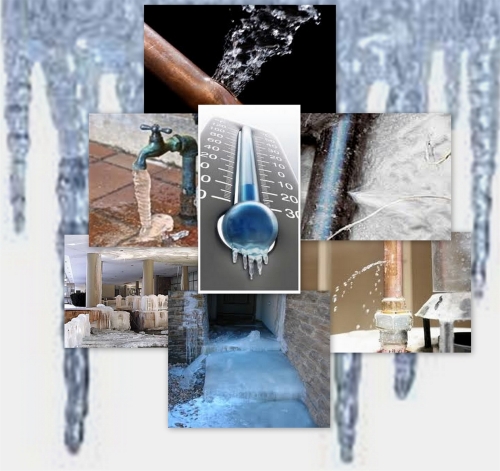


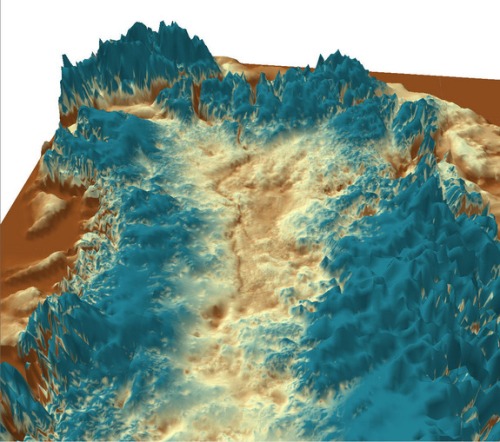
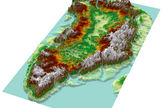
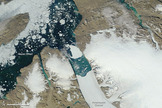

 When you think about everything in our world that needs water, and then think about how mankind has affected that resource on a global scale, the chances are high that you lack the whole picture. Fortunately, this short video on how we as humanity has affected water in the world today is here to help paint the global picture.
When you think about everything in our world that needs water, and then think about how mankind has affected that resource on a global scale, the chances are high that you lack the whole picture. Fortunately, this short video on how we as humanity has affected water in the world today is here to help paint the global picture.
 The
The  Links related to article:
Links related to article: